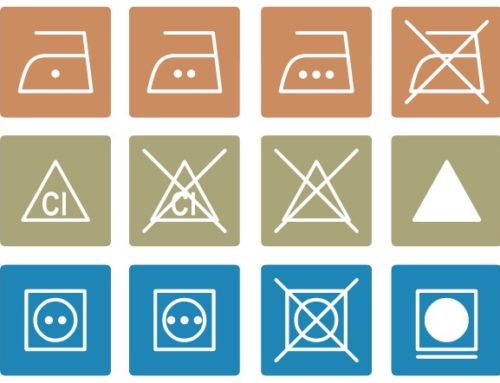Our business depends upon keeping your clothing looking its best. Yet misinformation continually creeps into media reports. Here are the facts regarding the most frequent areas of misinformation.
A consumer guide from Santoros Cleaners
The Truth About Professional Drycleaning
FICTION– Drycleaning wears out clothes. It’s better to clean infrequently.
FACT– Regular visits to our business keeps garments looking fresh and extends their useful life.
Spots and stains allowed to remain without treatment will gradually oxidize, set, and become permanent. We are trained and equipped to deal with stains, and if anyone can safely remove them, we can.
Don’t iron stained or soiled clothes trying to get just one more wearing out of them. Ironing dirty clothes will set stains and drive soil deeper into the fabric. Not good.
Never put a garment away with a stain on it. Stains containing sugar and even small amounts of any food are a tasty treat for insects, leading to holes from eaten fibers. Also, putting clothes away without cleaning them almost guarantees some discoloration or oxidation of stains.
Drycleaning will remove perspiration and body oil. That’s a good thing because these two elements contribute to stains and fabric degradation – and will eventually produce a lingering odor if left untreated.
In more than 100 years of textile research and testing, the Drycleaning & Laundry Institute has never seen any indication of the various dry cleaning processes wearing out fabrics during a useful lifespan. Failure to have a garment professionally cleaned on a regular basis can result in an unusable or ruined garment with stains, holes, odors, or fabric distortion.
FICTION– Pricing discriminates against women.
FACT– Prices are based on our costs of doing business without regard to gender, race, color, religion, marital status, age, national origin, or sexual orientation, of the person who owns or wears the garment.
We strive to charge the same for all garments of a similar type. However, customer care associates are instructed to check closely for any detail that may require specific handling requirements and to charge for that item accordingly.
FICTION– All stains can be removed.
FACT– No, they Can’t
Whether it’s a new garment or a treasured, well-worn garment, everyone hates it when they spill something on their clothing. We understand, and will always use our best efforts to make that accident go away. Sometimes it’s pretty easy – sometimes not. Either way, we have the professional expertise to do the job.
Successful stain removal depends largely on the nature of the stain, the type of fabric, and the colorfastness of the dye. Some fabrics and dyes simply will not withstand the use of cleaning or stain removal agents. Some stains, like ink and dried paint for example, can be impossible to remove.
FICTION– Care labels are always correct.
FACT– No. Most manufacturers never test garments before the required care label is attached.
Understanding and following care label instructions is almost an art – requiring a combination of knowledge of care symbols, instructions, and practical experience.
The Federal Trade Commission’s (FTC) Care Label Rule does not require testing before care instructions are assigned to a garment – only that a manufacturer have a ‘reasonable basis’ for their care instructions. Further, they are not required to provide instruction for the best care procedure – simply one that works. Sometimes it’s right and sometimes it’s wrong. We always attempt to alert our customer to a potential problem beforehand.
FICTION– The damage is your fault because it was just fine when I brought it in..
FACT– We strive for error free operation, but mistakes can happen. When we’re wrong we will make it right.
Statistics from the International Textile Analysis Laboratory (ITAL) demonstrate that the overwhelming majority of problems are the result of improper care instructions or damage that is not readily visible. We sometimes rely upon a determination from ITAL to resolve where responsibility should be placed.
Wrong Care Instructions – In general, the safest way to clean an item is to carefully follow the care instructions. If damage occurs after following the manufacturer’s recommendations, then rightfully, the manufacturer is at fault.
Consumer Related – Occasionally chemical damage occurs as the result of use and wear, but it remains invisible and unknown until the article is cleaned. In cases like these, the flexing of the fabric during cleaning causes already damaged fibers to fall out, leaving holes or a loss or change of color. The usual culprits are perspiration, alcohol, bleach, various acid and alkaline-based products, salt, and hair preparations.
Household Damage – Environmental conditions can cause damage to fabrics. This may include surface soiling from an accumulation of smoke, dirt, and dust or direct exposure to sunlight or artificial light. Discoloration or degradation of fabric may not be evident until these contaminants are removed.
FICTION– Shirts (and sometimes other garments) don’t shrink.
FACT– Yes they can if the material has not been properly preshrunk or some other element of construction has not been properly stabilized.
When it begins, shrinkage usually becomes progressively noticeable. Typically, manufacturers consider a two to three percent shrinkage factor acceptable. But when shrinkage or some other element of construction exceeds this factor, the result is shrinkage around the chest, sleeves, and neck. This is a problem associated with manufacturing and is beyond our control.
FICTION– Drycleaning harms the environment.
FACT– The drycleaning industry is possibly the most heavily regulated small business in America. Air and water regulations are comprehensive and farreaching. Safe operating practices, handling, and disposal of any chemicals entail strict monitoring and enforcement measures.
Article from Dry Cleaning & Laundry Institute International






